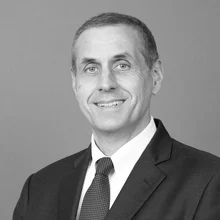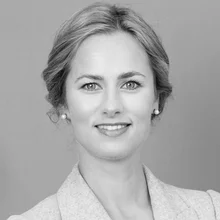
Fulcrum AM Looks to Quantify ESG Risk by Honing Hard Numbers
ESG risks will become part of investment and risk management processes across all funds at the firm.
In 1987, Polish-born Piotr Chmielowski left his communist homeland to study theoretical physics in the US. Now, as chief risk officer of Fulcrum Asset Management, he is taking another leap into the unknown—attempting to quantify risks many think unquantifiable.
The risks are environmental, social, and governance, or ESG, risks—which the $4.9 billion asset manager defines as something that can influence its future returns, rather than as a measure of how ethical the investment is.
The firm is engaged in “very quantifiably” integrating ESG risks into its investment and risk management processes across all funds, says Chmielowski, which includes those that invest in government bonds, currencies, and alternative assets—tough to measure in ESG terms.
“Once this is finished—in the next two months, I would think—our systematic funds and our discretionary funds will all have the ESG component as part of the risk assessment. They already include it to an extent… but they will do it in a purely quantifiable, numerical way,” he says.
Ideally, the process should involve three steps, he explains. First, each potential investment should be assigned an ESG risk score and an expected return. Then, the firm should set a risk tolerance for ESG risk—and this may differ between funds. Lastly, these numbers, along with values for non-ESG risks, should be run through a portfolio optimization engine. The resulting portfolio should provide the maximum return for an acceptable level of overall risk.
There may be slight differences in the way the process is applied to different investment strategies, says Chmielowski. “For some funds, we may have more stress on climate, and for some funds we may have more stress on social and governance issues,” he says.
“But the high-level approach is, you penalize investments based on the ESG risk,” he adds. “It is a risk. So we need to incorporate it in our portfolio construction and risk management the same way we incorporate currency risk, volatility risk, credit risk, and so on.”
To produce ESG risk scores, Fulcrum will use external ratings and its own analysis.

Chmielowski and responsible investment officer Iselin Aslakstrøm acknowledge there are problems with the relatively young practices of ESG data disclosure and scoring. Much of the data is patchy, covers too short a period, and is plagued by bias.
But Chmielowski suggests Fulcrum will not let the perfect be the enemy of the good.
“Given the importance of ESG considerations that society as a whole seems to be attaching to the subject, we need to make the best use of what is available, but also be conscious of the limitations—and not assume blindly that the best measure available now will be the best measure forever,” he says.
New measures
Whatever the limitations, there are plenty of vendor ratings for equities and corporate bonds—the traditional domain of ESG investing. But few such ratings exist for government bonds, currencies, and alternative assets, which make up a large share of Fulcrum’s investments.
Chmielowski says one way to get around this is to use available vendor data—on a country’s political freedoms, for example—to rate the ESG risk of its government bonds.
This step can then help work out the ESG risk of the country’s currency and interest rate swaps, as all three are linked—though it is not a straightforward exercise. “There are usually too many moving parts to be sure over a short time horizon. [But] over many years, this should average out to a clear relationship,” Chmielowski says.

For Chmielowski and Aslakstrøm, one measure that inspires confidence is a gauge they developed with a data vendor for the Fulcrum Climate Change Fund, which launched in August. The fund maintains a weighted-average portfolio temperature of below 2° Celsius for companies in the portfolio. No company will have a higher temperature than 2.5° Celsius.
This means the fund invests only in those companies whose current and planned activities will not contribute to an excessive rise in global temperature this century—defined as at least 2° Celsius above pre-industrial levels, Aslakstrøm explains.
“The decarbonization efforts of a company are compared with the required decarbonization trajectory of its sector. The output is an ‘implied temperature rise’ metric, indicating the level of alignment with the global warming target limits,” she says.
In principle, the same methodology could be applied to countries, Aslakstrøm adds, but she cautions that countries’ economic activities are much more complex than those of most companies.
If ESG data lacks history, the concept of ESG risk tolerance is even more novel. Chmielowski says the ideal would be to quantify a unit of ESG risk and compare it with the unit of investment return, but the thinking on this at Fulcrum—and in the industry as a whole—is still evolving.
Although ESG risk tolerance will probably vary between different funds at Fulcrum, between individual investments in the same fund, it will not. At least, this is the latest thinking at the firm. “This will hopefully average out the inherent uncertainty of risk assessment for individual investments,” Chmielowski says.
Given the importance of ESG considerations that society as a whole seems to be attaching to the subject, we need to make the best use of what is available, but also be conscious of the limitations
Piotr Chmielowski
Fulcrum’s fund-level ESG risk tolerance may in the future partly depend on whether the fund is domiciled in the European Union or the US, he notes, as regulators on different sides of the Atlantic have given divergent guidance on ESG risks.
For example, regulation proposed by the European Commission requires firms that provide investment advice and portfolio management to integrate sustainability risks into risk management policies. They must also consider clients’ sustainability preferences, in addition to their financial objectives.
The US Securities and Exchange Commission, on the other hand, is just in the process of formulating its views on these issues. But the US Department of Labor has already set out its stall. In June, it proposed a rule clarifying that private pension plans “are not vehicles for furthering social goals or policy objectives that are not in the financial interest of the plan”. Its proposal did acknowledge, however, that an investment’s ESG characteristics can present material economic risks or opportunities.
The weight of opprobrium
Just as its ESG risk tolerance may differ between portfolios, the design of Fulcrum’s ESG risk scores may vary too. “For some funds, this score may put heavier weight on E, while for others it could be more equally weighted E, S and G. For example, for the Fulcrum Climate Change Fund, the E aspect is—as the name says—the fundamental part of the fund design,” Chmielowski says.
The £70 million ($89.2 million) fund is Fulcrum’s first foray into impact investing. In addition to financial return—adjusted for risks, ESG or otherwise—the fund is intended to benefit society.
“If, hypothetically, all investors in the world invested in our fund only, then in theory all the equities that are warmer than the parameters of the fund would go to zero because nobody would want them. So, with certain qualifications, it’s a direct impact fund that aims to make global warming less of a threat,” Chmielowski says.
Fulcrum believes it will be able to align the fund with the decarbonization targets of the Paris Agreement without sacrificing returns, adds Aslakstrøm, as in the firm’s view, this transition is not yet priced in.
The climate change fund expands on an existing direction at Fulcrum that it calls sustainable investing. A March policy document on its website says it means “investing with sustainability front of mind by looking for relevant trends to invest in or making the sustainable choice when possible”. It also mentions some of the firm’s strategies that follow this approach.
My guess is that in 10 years’ time every investor will be an ESG investor
Piotr Chmielowski
Further, Fulcrum does not invest directly into companies that are involved in controversial weapons, predatory lending, or companies that generate a pre-defined part of their revenue from tobacco-related activities.
The ESG risk-integration project stands apart as it is not about making ethical choices. “We view ESG risk integration just as another type of material risk,” Chmielowski says.
When it comes to Fulcrum’s focus, however, it is clearly paying more attention both to ESG risks and choices—and that may put it in good stead for the future.
“My guess is that in 10 years’ time every investor will be an ESG investor,” Chmielowski says. “Investors will have their own ESG considerations and will look for investments that are aligned to these and the associated risks.”
But, he adds: “I don’t think that every investor in 10 years’ time will be an impact investor.”
Additional reporting by Noah Zuss
Further reading
Only users who have a paid subscription or are part of a corporate subscription are able to print or copy content.
To access these options, along with all other subscription benefits, please contact info@waterstechnology.com or view our subscription options here: http://subscriptions.waterstechnology.com/subscribe
You are currently unable to print this content. Please contact info@waterstechnology.com to find out more.
You are currently unable to copy this content. Please contact info@waterstechnology.com to find out more.
Copyright Infopro Digital Limited. All rights reserved.
As outlined in our terms and conditions, https://www.infopro-digital.com/terms-and-conditions/subscriptions/ (point 2.4), printing is limited to a single copy.
If you would like to purchase additional rights please email info@waterstechnology.com
Copyright Infopro Digital Limited. All rights reserved.
You may share this content using our article tools. As outlined in our terms and conditions, https://www.infopro-digital.com/terms-and-conditions/subscriptions/ (clause 2.4), an Authorised User may only make one copy of the materials for their own personal use. You must also comply with the restrictions in clause 2.5.
If you would like to purchase additional rights please email info@waterstechnology.com
More on Data Management
New working group to create open framework for managing rising market data costs
Substantive Research is putting together a working group of market data-consuming firms with the aim of crafting quantitative metrics for market data cost avoidance.
Off-channel messaging (and regulators) still a massive headache for banks
Waters Wrap: Anthony wonders why US regulators are waging a war using fines, while European regulators have chosen a less draconian path.
Back to basics: Data management woes continue for the buy side
Data management platform Fencore helps investment managers resolve symptoms of not having a central data layer.
‘Feature, not a bug’: Bloomberg makes the case for Figi
Bloomberg created the Figi identifier, but ceded all its rights to the Object Management Group 10 years ago. Here, Bloomberg’s Richard Robinson and Steve Meizanis write to dispel what they believe to be misconceptions about Figi and the FDTA.
SS&C builds data mesh to unite acquired platforms
The vendor is using GenAI and APIs as part of the ongoing project.
Aussie asset managers struggle to meet ‘bank-like’ collateral, margin obligations
New margin and collateral requirements imposed by UMR and its regulator, Apra, are forcing buy-side firms to find tools to help.
Where have all the exchange platform providers gone?
The IMD Wrap: Running an exchange is a profitable business. The margins on market data sales alone can be staggering. And since every exchange needs a reliable and efficient exchange technology stack, Max asks why more vendors aren’t diving into this space.
Reading the bones: Citi, BNY, Morgan Stanley invest in AI, alt data, & private markets
Investment arms at large US banks are taken with emerging technologies such as generative AI, alternative and unstructured data, and private markets as they look to partner with, acquire, and invest in leading startups.







